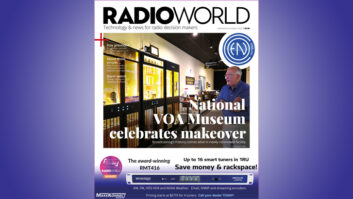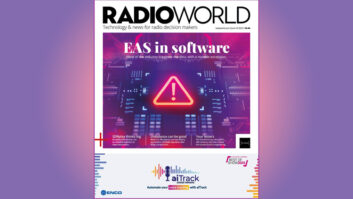Online-Only Issue Is Available Within the SMPTE Digital Library on the IEEE Xplore Platform; First Issue Focuses on Cloud Technology
WHITE PLAINS, N.Y. — June 5, 2018 — SMPTE, the organization whose standards work has supported a century of advances in entertainment technology and whose membership spans the globe, today announced that in addition to its current print and online publications, SMPTE has published an additional, special, digital-only edition of the SMPTE Motion Imaging Journal. Available now within the SMPTE digital library, hosted on the IEEE Xplore platform, this first online-only Journal issue focuses on topics surrounding cloud technologies for media applications.

With the addition of the online-only issue, the SMPTE Motion Imaging Journal is now published 10 times per year – nine print/online editions and now one online-only edition. John Belton is the chair of the SMPTE Board of Editors, and Dianne Purrier is the staff managing editor of digital and print publications.
“For the online-only edition, we maintained the entire editorial and production process applied to print, including the rigorous peer review,” said Purrier. “With the addition of the online-only edition, members and subscribers receive even more of the exceptional content they have come to expect from SMPTE and our Journal.”
Within this June digital-only edition of the Journal, authors including Richard Cartwright, Dave Frederick, Christopher Jenkins, Chris Northwood, and Robert Wadge address topics related to cloud technologies in technical papers. On-theme papers include “An Internet of Things Architecture for Cloud-Fit Professional Media Workflow,” “Lost in the Clouds? Cloud Storage Fits Into Media Workflows — Just Not Everywhere,” and “An Architecture for Cloud-Based IP Video Production Tools.” Additional articles focus on the impact of tone mapping on the bit rate and bit depth of coded sequences; use cases for the emerging AOMedia (AV1), an open, royalty-free video coding format designed for video transmissions over the internet; and time-compensated remote production over internet protocol (IP).
“The quality of the papers we received was so high that we found it relatively easy to put together this special digital-only edition of the Journal,” said Belton. “The cloud continues to be a compelling topic for the media and entertainment industry, and we’re proud to be showcasing quality technical papers on this subject from SMPTE members and subject matter experts.”
The SMPTE Motion Imaging Journal offers readers a view into the technical world of motion-imaging science. Each issue covers a particular topic, and past issues have focused on themes such as file-based workflow, compression, 3D, audio, distribution formats, advances in lighting, sustainability, and digital cinema. For its technical content, achievement of purpose, and technical execution, the Journal earned a Merit Award in the Society for Technical Communication’s 2017 International Summit Awards competition.
Particular issues of the Journal also include summaries of various SMPTE conference events — including the SMPTE Annual Technical Conference & Exhibition, the Future of Cinema Conference held annually at the NAB Show — and the Progress Report, published each September to provide an overview of the latest industry developments with a particular focus on standards community work.
Access to the Journal is a benefit of SMPTE membership. Nonmembers, individuals, and institutions may subscribe at smpte.org/publications/subscribe-rights-permissions.
Further information about SMPTE membership is available at smpte.org/join.
# # #
About SMPTE
For more than a century, the people of the Society of Motion Picture and Television Engineers, or SMPTE (pronounced “simp-tee”), have sorted out the details of many significant advances in media and entertainment technology, from the introduction of “talkies” and color television to HD and UHD (4K, 8K) TV. Since its founding in 1916, SMPTE has received an Oscar and multiple Emmy Awards for its work in advancing moving-imagery engineering across the industry. SMPTE has developed thousands of standards, recommended practices, and engineering guidelines, more than 800 of which are currently in force today. SMPTE Time Code™ and the ubiquitous SMPTE Color Bars™ are just two examples of SMPTE’s notable work. Now in its second century, SMPTE is shaping the next generation of standards and providing education for the industry to ensure interoperability as the industry evolves further into IT- and IP-based workflows.
SMPTE is a global professional association of technologists and creatives who drive the quality and evolution of motion imaging. Its membership today includes more than 7,000 members: motion-imaging executives, creatives, technologists, researchers, and students who volunteer their time and expertise to SMPTE’s standards development and educational initiatives. A partnership with the Hollywood Professional Association (HPA) connects SMPTE and its membership with the businesses and individuals who support the creation and finishing of media content. Information on joining SMPTE is available at smpte.org/join.
All trademarks appearing herein are the properties of their respective owners.
Link to Word Doc: www.wallstcom.com/SMPTE/180605SMPTE.docx
Photo: www.wallstcom.com/SMPTE/SMPTE-Online-Journal-June-Cover.pdf
Caption: Cover of First Digital-Only Edition of the SMPTE Motion Imaging Journal







